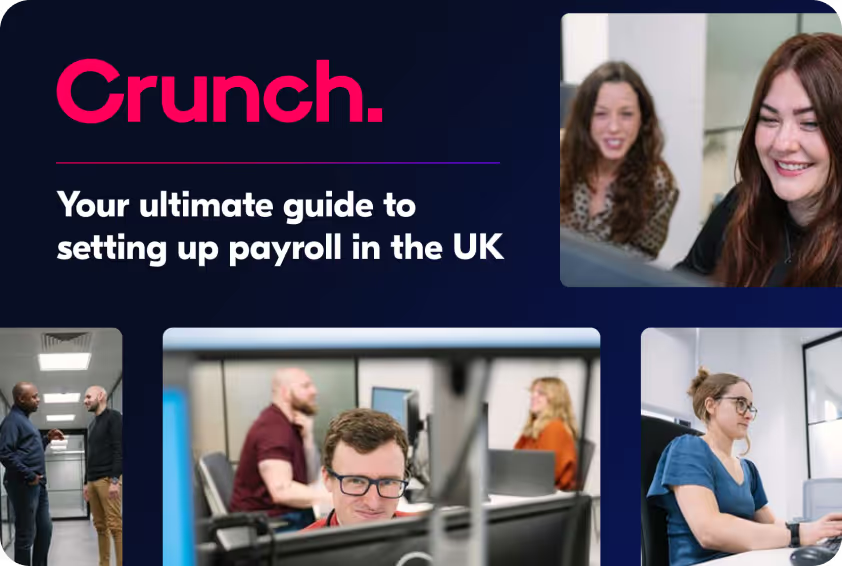If you’ve recently transitioned from employment to self-employment, the thought of organising, filing, and paying your own taxes can feel overwhelming. Where tax used to be handled automatically, deducted from your salary before it reached your account—it now requires a more hands-on approach.
If you’re full-time self-employed or have side incomes in addition to your 9-5, then you’ll need to take responsibility for your self-employed income tax. Instead of waiting until that big January deadline, start now.
Taking control now will help you manage cash flow more effectively and stay compliant with HMRC. For most self-employed people, this means filing a tax return through the Self Assessment system, where you report your income and calculate your tax liability directly with HMRC.
Do I need to complete a Self Assessment?
If you think you’re eligible for Self Assessment or you want guidance on filing a tax return online, read on for a step-by-step overview of the entire process.
For the 2024/25 and 2025/26 tax year, the threshold for needing to submit a Self Assessment form has risen from £100,000 to £150,000. However, you will still need to submit a Self-Assessment form if you are:
- Self-employed with a gross income of over £1,000.
- A partner in a business partnership.
- Liable to the High-Income Child Benefit Charge.
- Receiving any untaxed income.
{{tax-guide}}
Understanding the tax return process
As we’ve discussed in our Self Assessment guide, filing your tax return is how you declare your income, capital gains, and relevant expenses throughout a tax year to HMRC. In the UK, tax years run from April to April, with returns typically due in January. However, there may be different deadlines depending on if HMRC has notified you or if you’re voluntarily filing early.
In most cases, HMRC will send you a ‘Notice to File’ instructing you to complete a Self Assessment, but even if you don’t receive this notice, you may still need to complete the process.
If you meet the criteria below, then you should file a Self Assessment tax return:
- You’re self-employed and earn over £1000 per year.
- You’re a partner in a business or a Company Director where you’re not taxed under PAYE
- You have income from property or several properties exceeding £1000 per year.
There are other situations in which you need to fill out a Self Assessment, such as a high-income child benefit charge or untaxed savings income. You can find all criteria in full here.
You can send a Self Assessment return either on paper or digitally – though we’d strongly recommend choosing the online option. Before you file your return, make sure you register for Self Assessment.
Why is filing online the best option?
Filing your tax return online is faster, easier, and more reliable than using paper forms. Not only does it eliminate the hassle of paperwork and postage, but it also streamlines the Self Assessment process by automatically generating your tax bill. With a paper return, you’d either need to work out your tax liability yourself or wait for HMRC to calculate it once they’ve received your form. Filing online also ensures you get the correct supplementary pages based on your answers, reducing the risk of missing important information.
How to register and file a tax return online
Step one: Register for self-assessment
Sign up to the Government’s ‘Gateway ID’ platform. You need a National Insurance number, postcode, and two other forms of identification from the following:
- Valid UK passport
- Photocard driving licence
- Payslip from the last three months
- P60 from the employer for the last tax year
- Details of a tax credit claim
- Details from a Self Assessment tax return
- Information held on a credit record
Once you’ve done that, you’ll then need to register for Self Assessment via the HMRC website. There are different options depending on whether you’re self-employed, registering a partnership, or have other circumstances. Choose the one that applies to you and follow the steps on the site.
Step 2: Gather the right information
To ensure you can complete your Self Assessment tax return as efficiently as possible, gather all the information you need before you start. This might seem like a hassle – but it’s more frustrating to get halfway through and have to come back to it later.
What will you need? It depends – but any of the following that apply to you should be gathered ahead of time:
- Your Unique Taxpayer Reference (UTR)
- National insurance number
- Full records for any expenses relating to self-employment
- Any income from overseas, rent, a partnership, dividends, or interest
- All taxable benefits from the state
- Any pension contributions
- Tax payments you may have already made (known as payments on account — see our guide for details)
Step 3: Fill out the relevant sections
You don’t have to complete every single field in a tax return. Instead, focus on the parts which are relevant to you. Our Self Assessment service will identify these for you and take care of the tax return process automatically.
The most commonly completed section is SA100, which contains the most important fields:
- Income, but only from interest gained in bank accounts/building societies AND dividends
- Income from other sources, such as self-employment, is declared on a supplementary page
- Charitable donations, specifically any Gift Aid donations you’ve made during the tax year
- Pension contributions
- Benefits, where only taxable benefits are relevant, which are Bereavement Allowance, Carer’s Allowance, Industrial Death Benefit, Jobseeker’s Allowance, and Incapacity benefit
After you’ve filled this information out, you’ll need to complete any necessary supplementary pages to declare income from self-employment (SA103), property (SA105), or capital gains (SA108).
Supplementary pages and self-employment tax returns
If you earn income from self-employment, you need to declare it separately from the income on SA100. This is because your self-employed income should be entered as a gross turnover figure under the ‘business income’ field. Don’t deduct any expenses yet – HMRC wants the full turnover amount in a tax year.
For expenses, you have two options depending on your earnings. If your turnover exceeds £85,000 you’ll need to itemise your expenses and then offer a total. If, however, your turnover is less than £85,000, you can just enter total expenses as a single figure.
If you claim trading allowance, you can’t submit your expenses as part of your return.
For those earning income from property and capital gains, the process is the same – you’ll need to access the relevant supplementary page and then declare income and expenses. The only real difference is what you can or can’t claim as an expense for each type of income.
Step 4: Submit your completed return
Once you’ve completed all the necessary fields, submit your tax return. You’ll receive a tax bill outlining the amount of tax you need to pay, along with any allocated National Insurance contributions if you’re self-employed. If you submit your return online, you’ll receive your tax bill instantly, whereas paper submissions may take longer to process. To learn how to check if your tax return has been processed, read our guide: How Can I Check If My Tax Return Has Been Processed?.
{{cta-self-assessment}}
How to pay your tax bill
Once you’ve got your tax bill, you’ll need to actually pay it - don’t assume that HMRC can automatically deduct it from your earnings like they do with salaried employees.
Understanding your tax bill
When reviewing your tax bill, you’ll probably see two types of payment demands and deadlines for your payments.
- Payments on account: HMRC makes you pay for next year’s tax bill ahead of time. The only time you won’t have to pay this is if you’ve already paid off 80% or more of last year’s tax. This is usually split into two different payments with different deadlines.
- Balancing payment: this is the amount owed on last year’s tax bill after any payments on account are deducted. It may just be called ‘tax liability’ in your letter/email.
The bill will also include payment details and give you different options for payment – though we’d always recommend using a digital payment system for speed, security, and convenience. If you're interested in confirming the figures against one of our online calculators, take a look at our income tax calculator and input your earnings to generate an estimated sum.
Can you pay your tax bill via instalments?
You can ask HMRC to repay via ‘Time to Pay’ instalments – which depends on their decision and is limited by certain conditions. Alternatively, if you complete your tax return early, you can simply budget out the repayments yourself and issue them each month from your bank.
The fastest way to pay is through the HMRC app, which you can log into with your Government Gateway ID and UTR to access the bill generated by your assessment. From there, you can authorise a bank transfer and pay quickly and painlessly.
Don’t let a payment lapse because you’ve forgotten about it or overlooked it. Read our guide to paying your tax bill quickly to see the easiest ways to pay - even if you can’t afford to repay your bill in full.
If you are also employed or in receipt of pensions, you can also choose to have HMRC take the repayments from that income source. If you're interested in this method of repaying your tax bill, make use to check HMRC's eligibility criteria.
Secrets to help streamline the online tax return process
We asked Crunch accountants and tax experts for their advice on making your tax return as simple as possible. Here are their top tips:
“It’s better to file your Self Assessment early and plan on spreading payments from May to the deadline on the 31st of January (as you’ll have no penalties and interest), rather than leaving it late and be left panicking about the lump sum payment to be made. The same logic applies to getting refunds as well.”
“Payments on account are not usually planned for by most clients, especially those new to self-employment, leaving them surprised by the extra amount to pay. Plan ahead early to avoid the shock.”
“Consider using an accountancy service to make your life much easier. For less a small fee it’s a no-brainer for the time it’ll save you. You won’t have to sort through your income and expenses so painstakingly because you’ll have an expert to help.
“Use your tax return to maximise your allowable expenses. Sole traders can claim for many of the same expenses as a limited company, so make sure you’re tracking your business mileage, travel expenses, accountancy fees and more. See our guide to what expenses a sole trader can claim to learn more.”
Make sure to also check out our recent tax return guide which answers the most commonly asked Self Assessment questions.
Common mistakes and penalties associated with tax returns
Some of the most common problems that crop up when it comes to tax returns are all down to human nature and the busy world of self-employment. When running a business or even a side venture, it’s easy to lose track of the data you need to keep on top of for an efficient tax return process. Here are some common issues you may encounter:
- Failing to account for benefits: some benefits are taxable, which high earners may not realise. If you earn good income from self-employment, make sure any benefits you claim that might be taxable are included on your tax return.
- Failing to include ‘all’ income: if you’re self-employed, you might focus on SA103 and forget to include additional income on SA100 (which is for income gained through bank interest or dividends.)
- Mishandling expenses: what you can and can’t claim for as a business expense is a topic unto itself. When filling out your tax return, make sure the expenses you’re including are genuine, documented, and relevant – otherwise, you may face significant penalties.
- Missing the deadline: there are penalties for being late to file your tax return AND for failing to repay on time. You need to make sure you file your return on time and issue any payments before the due date to avoid being fined.
Why you should consider hiring an accountant for your tax return
If you’ve followed this guide, you now have a clear understanding of the key steps and details involved in completing a tax return. Filing online and using the HMRC app to make payments is simpler than the old paper-based system, but it still requires gathering all your financial information and navigating a process that can be prone to human error.
Our Self Assessment Tax Return service is perfect if you want to free up your time and have an expert handle your return. We’ll complete your return quickly and submit it on your behalf, saving you time, ensuring all of the information is correct and preventing you from losing out on valuable working hours.

.svg)



.webp)










.avif)




